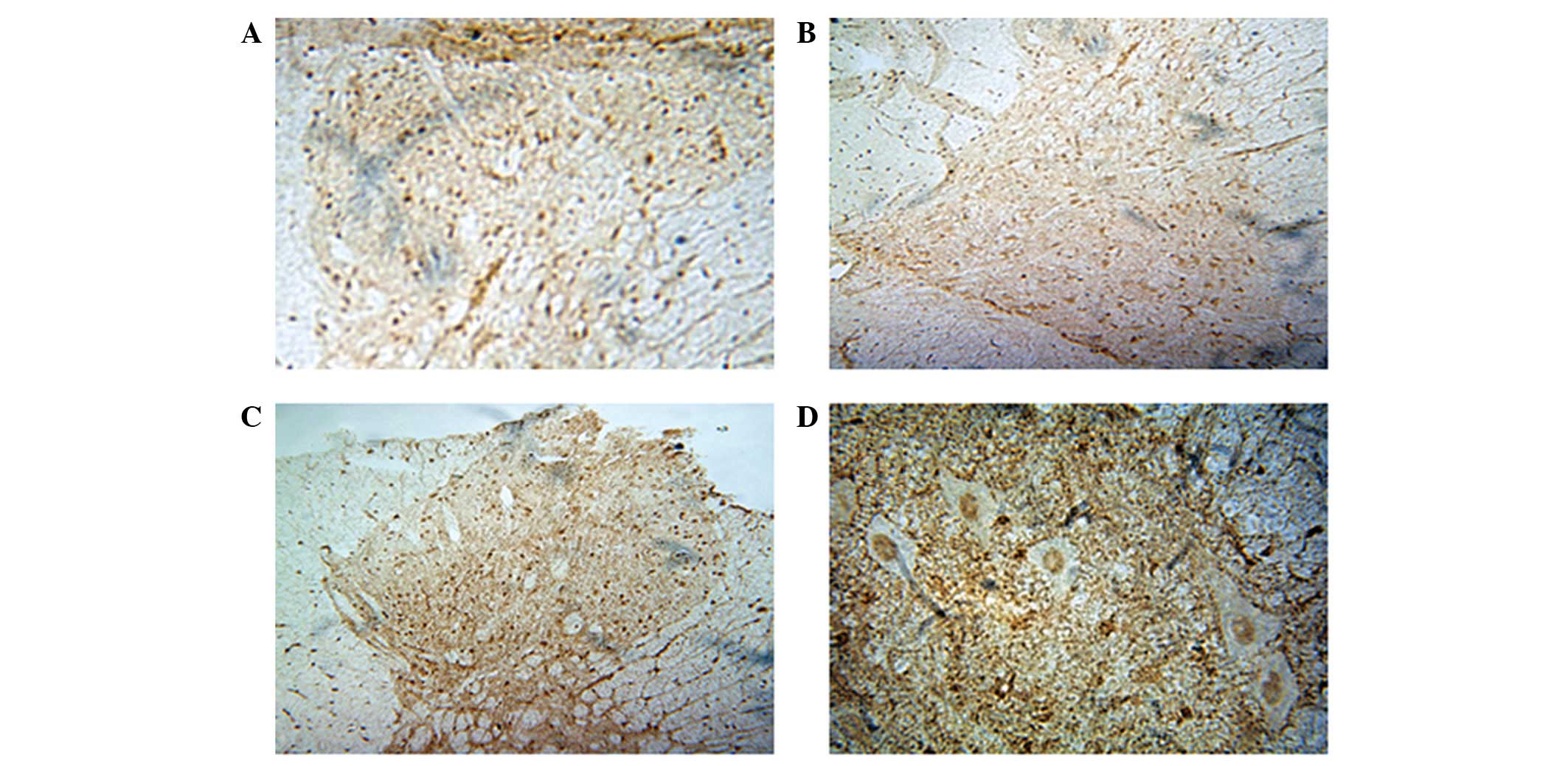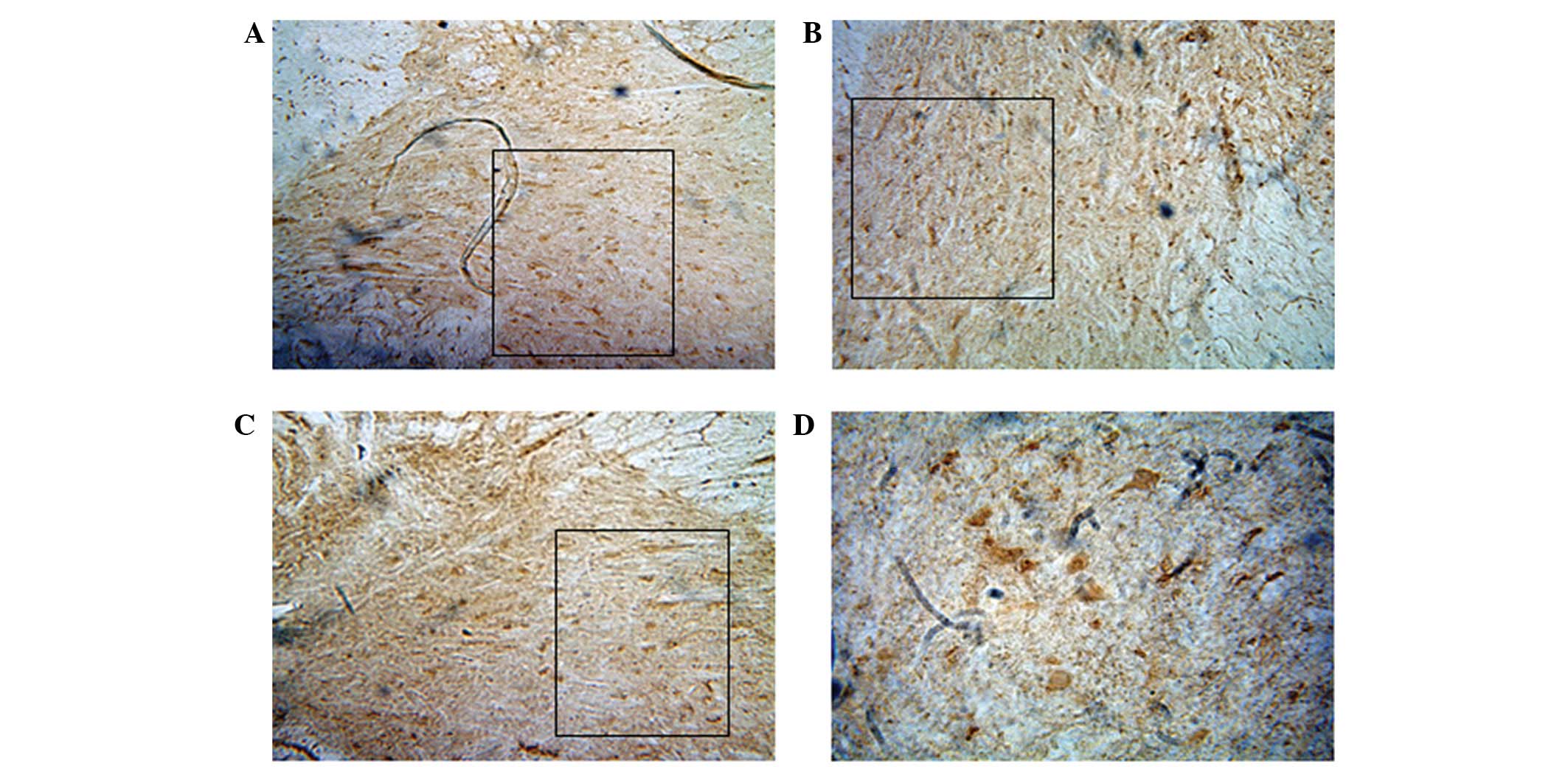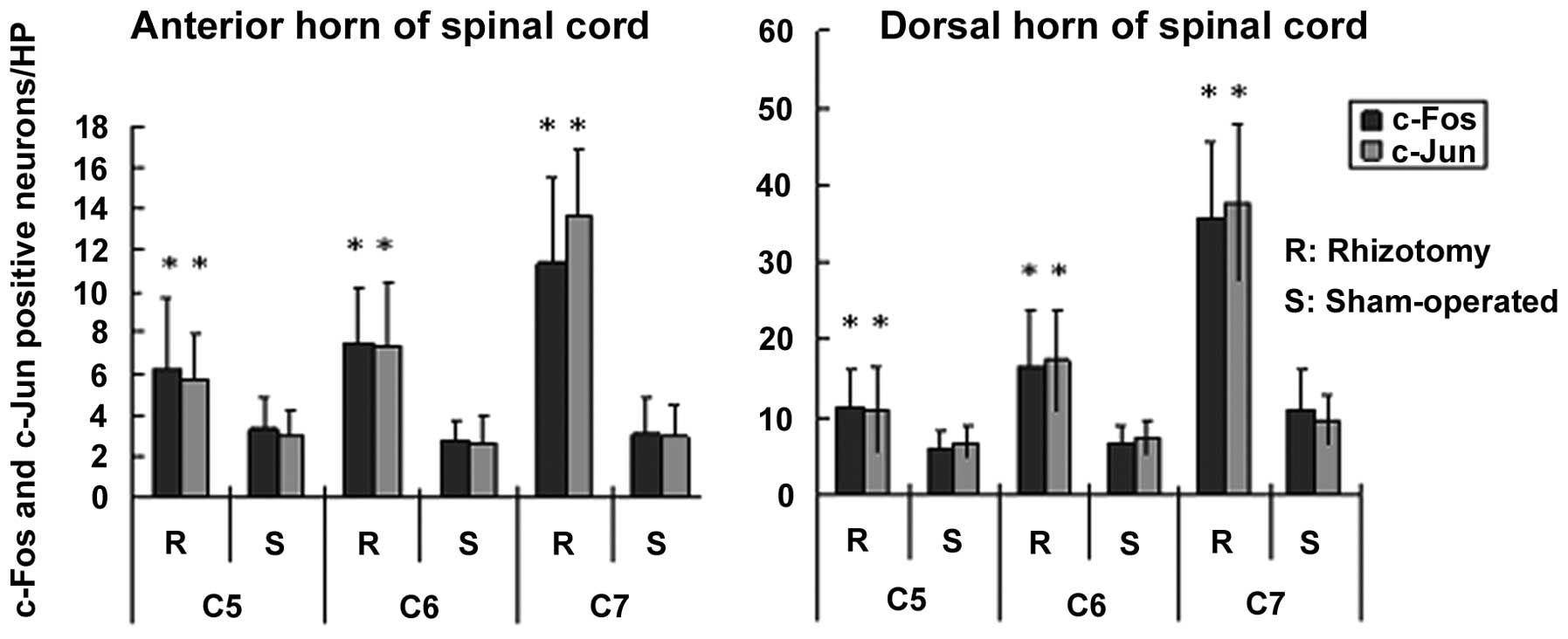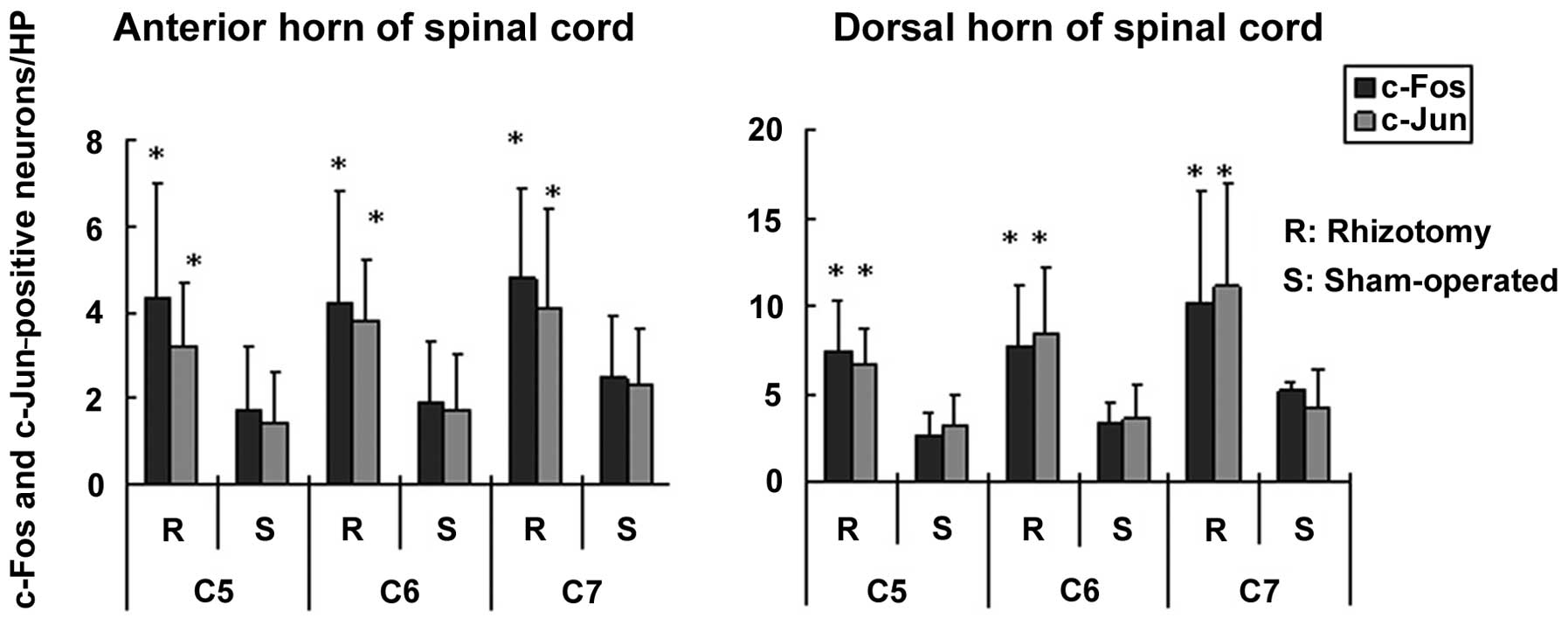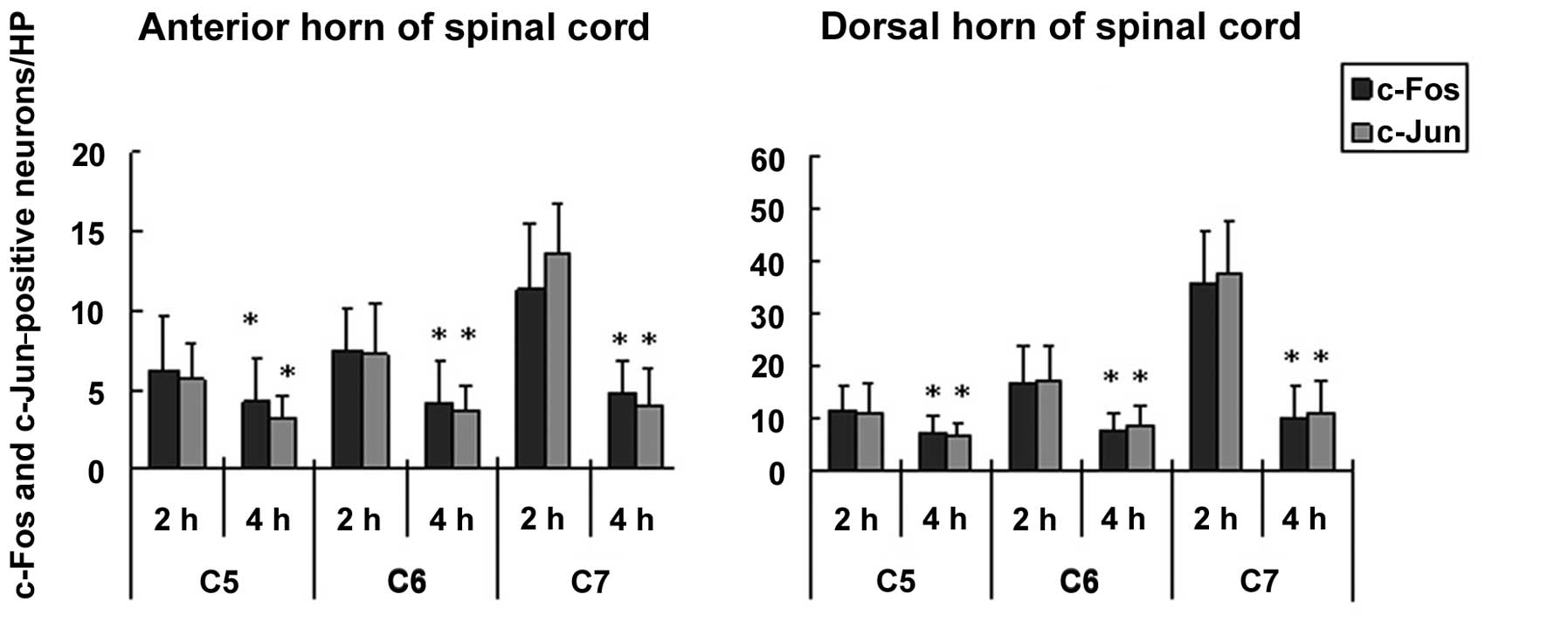Spandidos Publications style
Li H, Li Q, Xie K, Feng S, Wang P and Ma X: Expression of c-Fos and c-Jun in adjacent cervical spinal cord segments following C7 nerve root rhizotomy in rats: Indication of a neural pathway between adjacent cervical spinal cord segments. Exp Ther Med 6: 373-377, 2013.
APA
Li, H., Li, Q., Xie, K., Feng, S., Wang, P., & Ma, X. (2013). Expression of c-Fos and c-Jun in adjacent cervical spinal cord segments following C7 nerve root rhizotomy in rats: Indication of a neural pathway between adjacent cervical spinal cord segments. Experimental and Therapeutic Medicine, 6, 373-377. https://doi.org/10.3892/etm.2013.1136
MLA
Li, H., Li, Q., Xie, K., Feng, S., Wang, P., Ma, X."Expression of c-Fos and c-Jun in adjacent cervical spinal cord segments following C7 nerve root rhizotomy in rats: Indication of a neural pathway between adjacent cervical spinal cord segments". Experimental and Therapeutic Medicine 6.2 (2013): 373-377.
Chicago
Li, H., Li, Q., Xie, K., Feng, S., Wang, P., Ma, X."Expression of c-Fos and c-Jun in adjacent cervical spinal cord segments following C7 nerve root rhizotomy in rats: Indication of a neural pathway between adjacent cervical spinal cord segments". Experimental and Therapeutic Medicine 6, no. 2 (2013): 373-377. https://doi.org/10.3892/etm.2013.1136















